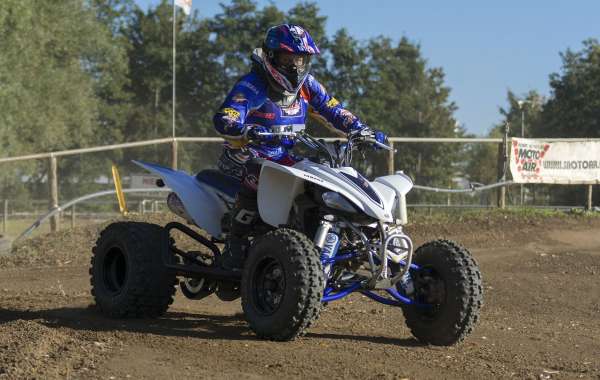The ATV & UTV market offers off-road vehicles which cater to commercial and recreational applications. An ATV comes with handlebars along with four tires that are low pressure. This makes it easier to navigate various types of terrain.
Popular for their ability to navigate off-road and traverse all types of terrain, ATVs are utilized in various applications. That includes military operations and agriculture. Even though the ATV & UTV market is mainly used in off-road terrains, only select places authorize their operation on public roadways.
These vehicles require different handling techniques and need specific training beforehand. The ATV & UTV market size has been growing in recent years. It is because they offer the capability to reach remote locations. It also offers a convenient means to transport equipment and supplies. Additionally, they serve transportation purposes by eliminating the need for animals. They are also employed in military and ground units for patrolling and reconnaissance missions.
The Differences
ATVs and UTVs are separate vehicles that fulfill different roles. They also necessitate varying insurance policies. At its core, an ATV is defined by three key features. That includes a handlebar steering, a straddle seating, and the capability to navigate diverse terrain. Even though there are numerous modifications and customizations available, all ATVs fundamentally include these elements.
An ATV may feature four or three wheels. Its tires are inflated to a lower pressure in comparison to typical UTV or car tires. The operator controls the ATV using handlebars while sitting in a straddle position. Typically designed for a single rider, some ATVs can accommodate the operator along with one passenger. It is important to select the right size ATV for the operator. When used safely and properly, ATVs deliver swift transportation over diverse terrain.
Most stock ATVs are equipped with a thumb throttle. This enables the operator to control acceleration by pressing with their thumb. However, it is possible to modify it to use a twist throttle. This enables acceleration control by twisting the handle. The unpredictable terrains that ATVs cover can make twist throttles challenging and dangerous to handle. For instance, if a rider is inadvertently twisting the throttle while descending a hill, the ATV might accelerate unexpectedly. This could result in the rider being thrown forward and the vehicle rolling onto them.
UTVs focus more on work rather than recreation. These powerful vehicles can accommodate passengers side by side and offer substantial storage space. This makes them ideal for transporting supplies in locations where truck access is limited or impossible.
UTVs generally have a standard four-wheel base much like a car. But they can be equipped with extra wheels for specialized uses. They are steered with a steering wheel which gives them a car-like handling in comparison to ATVs.
Another difference in the ATV & UTV market is in terms of acceleration and braking. UTV controls them by using foot pedals. With standard occupant restraints and the option to include roll bars or a windshield, they generally offer more safety components in comparison to ATV.
UTVs frequently come with a cabin. It typically resembles a golf cart roof. Even though enclosed cabins can be found as well. They are known for their substantial storage space and are primarily used on farms for transporting feed and supplies. Their use is expanding into non-agricultural areas including schools. They can help move water jugs or sports equipment.














